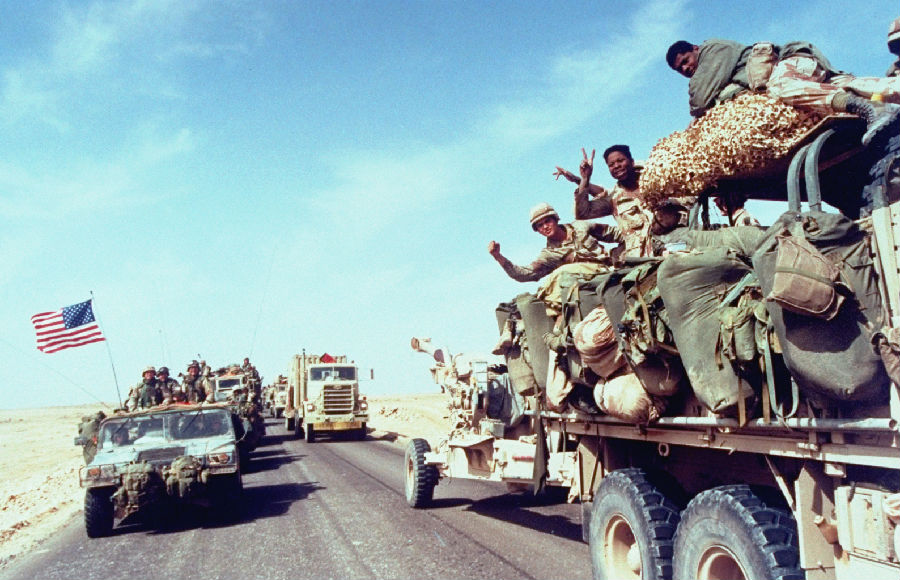In segments 29c: After the Cold War, we examine America's post-Cold War foreign activities, with particular emphasis on the Middle East
29段第三部分:冷战后,我们来看一下美国冷战后的外交行动,重点放在中东地区。
The US spent most of the 1980s watching its most hated enemy, the Shiite regime in Iran,
美国在80年代的大多数时候一直在看着它最讨厌的敌人,伊朗的什叶派政权,
fighting to a bloody stalemate with the equally loathsome Iraqi regime of Saddam Hussein, a Sunni Muslim
和同样令人厌恶的伊拉克萨达姆·侯赛因政权逊尼派政权间的暴力僵持。
When the Berlin Wall fell and the Soviet Union eased into his death spiral, American started celebrating the demise of the Cold War
柏林墙倒塌后,苏联缓缓地进入了自己的死亡旋涡,美国开始庆祝冷战的终结。

They spoke of a "peace dividend" to be found in the money which had previously been spent in the Arms Race
之前很多钱都花在了军备竞赛上,现在省下的这笔钱被称作是“和平红利”。
But in 1990, Saddam Hussein's invasion of Kuwait put an end to such talk
但在1990年,萨达姆·侯赛因入侵科威特结束了这样的红利。
Led by US President George H.W. Bush, the west and its Arab allies quickly retook Kuwait and at least apparently neutralized Iraq
当时美国总统乔治·赫伯特·沃克·布什带领西方和阿拉伯同盟国迅速收复了科威特,而且显然至少使伊拉克保持中立。
The US's later interventions in Somalia, Bosnia and Kosovo were not, sorry to say, anywhere near as successful as Operation Desert Storm
美国后来入侵了索马里、波斯尼亚和科索沃都没有。遗憾的是,都没有“沙漠风暴”行动那么成功。
Segment 29d: In the wake of September 11th, briefly examines American and Russian experiences with organized terrorism
29段第四部分,9.11之后,人们简单地回顾了美国和俄罗斯在应对有组织的恐怖主义的经历。



